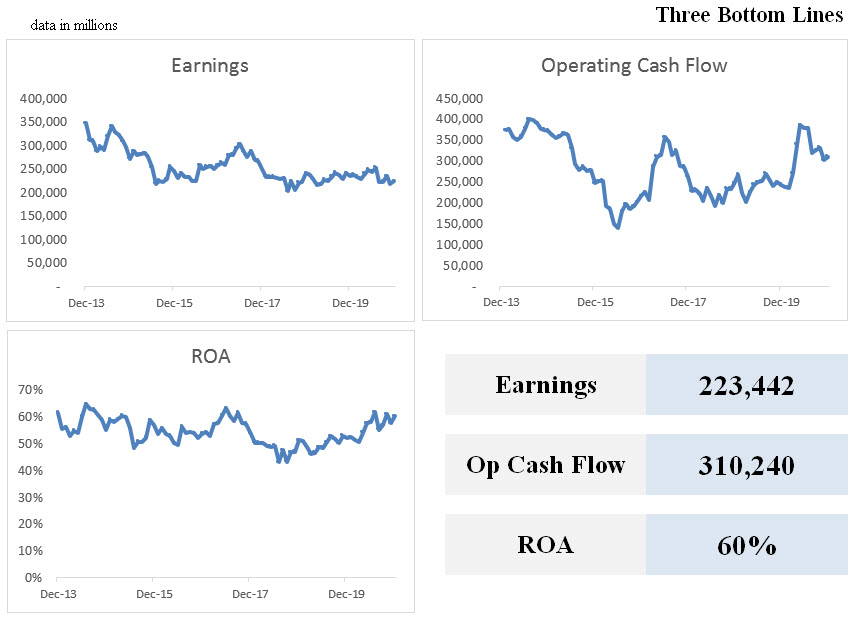Weekly Bookmarks
106th Edition – February 14, 2021
The illiterate of the 21st century will not be those who cannot read and write, but those who cannot learn, unlearn, and relearn.
Liz Wiseman
3 Big Ideas for the 1st Quarter Halfway Mark
Does it seem possible that we’ve hit the halfway point of the first quarter? How are we doing on company objectives and goals? How about those personal learning and growth initiatives? This week, I’m offering some ideas to kickstart or augment your continued growth journey through the remainder of the first quarter.
Big Idea One
A few years ago, I was playing the role of a sounding board to a young and new CEO. I suggested that he create a mastermind group for similar CEOs in his city to swap ideas and spur one another on. Not only did he love the idea, but he had already started the process.
How about the rest of us? Earlier this week, I was intrigued to read more about the organization Working Out Loud thanks to reading a LinkedIn reference about the group.
Reading is something we do for pleasure and it’s also something we do instinctively to learn and grow. But I still find that I learn more by interacting with others and picking their brains. Accordingly, consider starting such a small mastermind group in your field of expertise. Use some of the Working Out Loud resources as a guide if needed.
Below is one financial leader who is applying this idea to keep growing:
I have read now about a third of the way through the book and been in the circle for two weeks and it is unbelievable how the advice John Stepper gives has so quickly paid dividends. I feel that my work has more purpose and I feel that I am helping others.
Robert Jaeger, Assistant Controller at Continental

Big Idea Two
When I hear about or see a framework or mental model, I immediately want to know two things – 1) what problem was that framework originally solving, and 2) where did it come from? Regarding that last question, I want to know about the raw material that fed that framework.
For instance, take SMART goals as an example. That term according to many blog posts was originated by Doran, Miller, and Cunningham in 1981. But where did those writers and researchers come up with their mental construct?
I can’t prove it, but my guess is that they had to be influenced by the works of Dr. Edwin Locke who wrote one of the landmark studies on goal setting along with his colleague, Gary Latham.
If you dive into the work of Locke, he mentions the idea of commitment to goals. Any person with the smartest SMART goals will never reach them if there is a lack of commitment.
The big idea here is to look back at your company’s or personal goals and see where progress is more than lacking. If so, what’s the commitment level on those goals? If the commitment level is low, then what happened? And can the commitment level be rejuvenated?
Big Idea Three
We’re all leaders. Yet, I’ve never been a fan of reading leadership books. Some of you do, and that’s great. I much prefer reading memoirs, biographies, and autobiographies to gain leadership insights.
I’m personally making an exception before the end of Q1 by reading a recommended leadership book. For ideas, I’m choosing a book from Marine Corps University Research Library’s suggested list of leadership books.
If those books are good enough for the marines, then I’m all in. Two of our future podcast guests like Brene Brown’s Dare to Lead which is on that list, so that’s the book I’ll probably be reading.
What will you be selecting from the leadership bookshelf?

Big Idea Four
It seems like everywhere I turn, I see Liz Wiseman and a reference to her best-selling book, Multipliers. But did you realize she’s the author of Rookie Smarts? I found the book to be so good, I just had to interview her about the book last year.
Being rookie smart is about having this insatiable appetite toward learning and being willing to tackle any new project because of the inner desire to keep growing and learning. That’s why Liz says rookies sometimes have an edge over experts.
Need an example? I’m finally getting around to watching Last Dance on Netflix. If you’ve seen it, re-watch the episode when Michael Jordon decided to play professional baseball. My favorite part of the show was hearing his coaches talk about MJ’s rookie attitude and mindset. He embraced it.
If Liz watched that documentary, I’m sure she was smiling and saying, “That’s exactly what I mean.”
So here’s a big idea. If you decide to create a mastermind group of like-minded peers, then decide in advance where you want to be rookie smart.

Big Idea Five
I’m not a fan of benchmarking. That doesn’t mean I don’t like studying other companies where I have strong industry expertise. I just find many of the benchmarking software products lacking in insights with a focus on too much eye candy.
Regarding the study of other companies, when I start working in a new industry, I’ll find the number one company in that industry that’s publicly traded. If I can’t find a hit, I’ll get real close. Here’s what I’m looking for in the reporting and in dozens of articles I’ll read from a wide array of journalists who write about that company …
- Who are their primary customers and what’s the main method or the channel they’ve used to find those customers?
- Pulling some ideas from Pat Dorsey and his book The Five Rules for Successful Stock Investing, what is their durable competitive advantage, and is their moat wide and/or deep?
- Do they have pricing power? That is so, so, so very critical. On the opposite end of the spectrum is a company that’s subject to commodity pricing. If so, their business model has to be built on volume to be able to sustain itself and to grow.
- I look for recent innovations. Many small businesses under $50 million are generally me-too companies following the plan to generate cash daily. There’s not a strong ‘looking beyond’ mindset. Last year’s business model is still this year’s model and probably next year’s. That’s the norm when financial resources are limited. For larger organizations. I expect to see new products and services rolled out every 3-5 years. What are they and have they been successful?
- Every business has 3 bottom lines. Many have 5, but there are three that are the defining, results-based measures revealing success, status quo, or decline. For instance, in eCommerce, the three bottom lines are earnings, cash flow, and ROA (see below). Identify the 3 bottom lines in the company you selected. Are the numbers growing, dropping, or flat? Many annual reports include 10-year history which is the time period I use.

This last big idea has nothing to do with benchmarking. Instead, it’s about elevating our strategic and financial leadership skills. I continually find the exercise above does exactly that.
I’m anxious to hear about your big ideas and progress you are making.
Recent Bookmarks – 105 |104 |103
Thank You For Reading. Thank you for making this a successful newsletter.
If you like the content above and the posts at CFO Bookshelf, may I ask a favor? Feel free to share this with other readers along with commenting on your favorite blog posts on LinkedIn, Twitter, or Facebook.
Always be learning and growing.

Leave a Reply